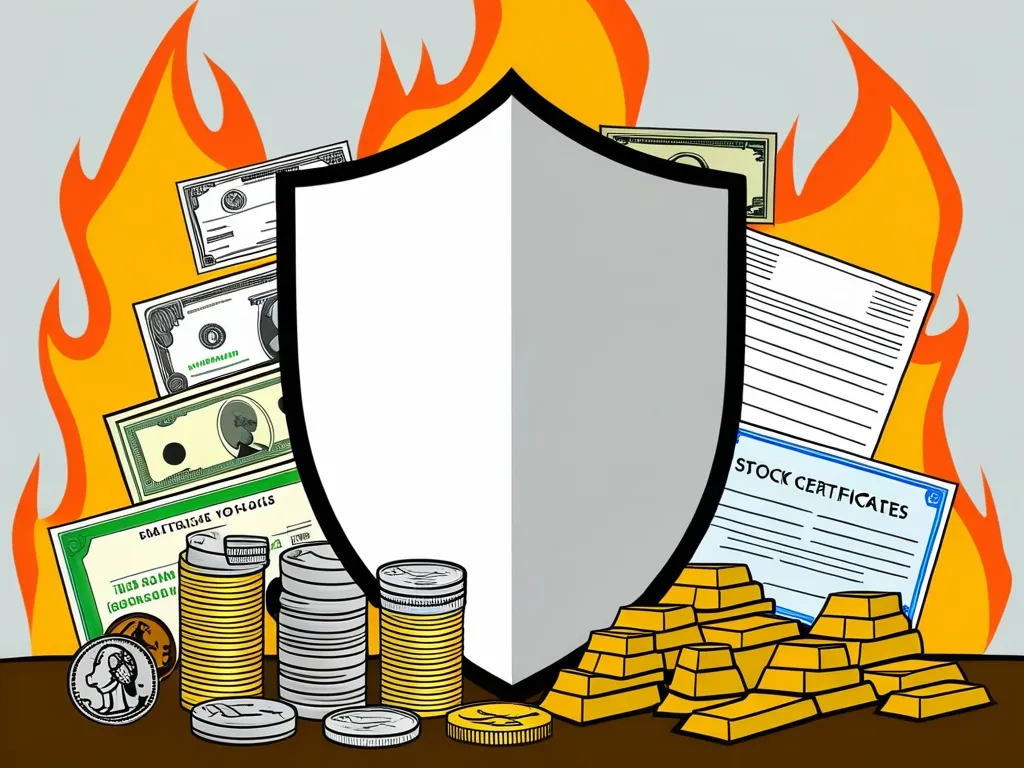When you think about banks, you probably imagine steady, safe places where money is kept and lent to help businesses grow or families buy a home. But what happens when banks, driven by profit and distorted by global politics, lend billions to dictatorships? The story of the 1980s Less Developed Country (LDC) debt crisis holds lessons that still ring true today, even if we often overlook them.
The journey to this crisis started with a flood of cash. Oil-rich countries made a lot of money in the 1970s and deposited it in global banks. These banks, now with a mountain of cash, needed someone to lend it to. Developed countries didn’t want more debt, so all eyes turned to developing nations—the so-called “global south.”
What’s fascinating, and maybe a little scary, is how banks assumed that lending to governments—even those with shaky records—was almost risk-free. The thinking was, “countries don’t go bankrupt like companies.” Did anyone stop to ask if this was smart? Not really. This assumption led to a wave where banks lined up to hand out loans to anyone with a flag and a signature, often ignoring whether the money would ever be repaid.
Many of these countries were ruled by dictators or unstable governments. These leaders had little interest in using the money to help their people or build strong economies. Instead, they built flashy projects no one needed, “white elephants,” and moved a lot of the cash into personal accounts overseas. Sometimes, the money went to the military or to buy loyalty at home—nothing that would help the country pay the debt back.
Have you ever wondered how a decision made in a fancy bank office on one side of the world can change lives for millions on the other? That’s exactly what happened. When Mexico announced in 1982 that it couldn’t pay its $80 billion foreign debt, panic spread. Banks realized they’d made a huge mistake, and soon dozens of countries were swept up in a financial crisis that would last for years.
Think about this: who really pays the price when a dictator borrows billions then flees? It’s the regular people, not the ruler who benefited. Even after dictators are gone, new governments often get stuck repaying the old debts, fearing that if they don’t, no one will lend to them again. Is that fair? It’s a question that’s challenged leaders and thinkers for decades.
The impact wasn’t just immediate hardship. Countries facing crisis were forced to turn to institutions like the International Monetary Fund and World Bank for help. The cure, however, came with a bitter taste. These organizations required countries to reform their economies—cutting spending, reducing jobs, selling off state industries. For many families, it meant fewer jobs, costlier food, and vanished hope. Can you imagine being told your country has to pay for bad debts you never agreed to?
“Those who cannot remember the past are condemned to repeat it.” – George Santayana
What’s often overlooked is how this crisis changed the way the world handles debt. Instead of banks dealing quietly on the sidelines, the solution was to turn the old, unpaid loans into bonds that could be traded. This was the start of what we now call “emerging markets debt.” Suddenly, the problem wasn’t hidden on bank balance sheets—it was something investors around the world could buy and sell. It’s odd to think that the pain of poor countries became just another asset class in wealthy portfolios.
Here’s another twist: during the crisis, investors and institutions began to realize that political risk—whether a government is stable or how much power a dictator has—can matter as much as economic numbers. Ever since, lenders started using new methods to judge if a country’s government is likely to pay its debts, not just if the math adds up.
Why did this matter? Because the cycle of “lend freely, worry later” has a way of repeating. Just look at modern times. Countries like China have been lending heavily to poorer countries, building huge projects under strategies like the Belt and Road Initiative. Some of those loans are already turning sour. The lesson? Banks and investors seem to forget history as soon as the wounds start to heal.
If you’re an investor or even just someone interested in current events, it’s important to realize that these global crises are never just about numbers. Countries can get swept up in a tidal wave of outside money that makes problems worse, not better. When repayment dries up, the same sad story unfolds—ordinary people suffer, big financiers usually find ways to limit their losses, and everyone debates what to do next.
“The only thing we learn from history is that we learn nothing from history.” – Friedrich Hegel
Here’s a lesser-known fact: some experts and campaigners pushed for the idea of “odious debt.” That’s debt taken by dictators for personal gain, or to oppress, that people shouldn’t have to pay back. But despite strong arguments, most countries worry that refusing to pay would hurt them more, cutting them off from investment and aid. So, the cycle continues.
On a practical level, there are lessons for anyone dealing with money across borders. You can’t just look at economic numbers—you have to pay close attention to who holds power and whether they might change the rules without warning. Investors now talk a lot about “sovereign risk,” a fancy way of describing this messy mix of politics, rules, and reality.
“Give me control of a nation’s money supply, and I care not who makes its laws.” – Mayer Amschel Rothschild
Modern crises may look different on the surface, but at their heart, they repeat these patterns: eager lenders, weak oversight, political games, and regular people paying the bill. If investors forget to consider political risks, they repeat the mistakes of the past. If global institutions don’t watch closely, the burden falls on the most vulnerable.
Can you spot echoes of this crisis in today’s news about debt problems in Africa, Asia, or Latin America? Think about the headlines: countries struggling to pay foreign loans, governments making promises they can’t keep, leaders facing pressure to cut public spending even as citizens protest.
Yet, even in this painful story, there are opportunities. For shrewd investors who understand how troubled debt gets reworked or turned into bonds, times of panic can offer rare chances to make gains. But that only works if you understand the real risks, both economic and political, rather than taking them for granted.
So, what should we take away from this tangled story of banks and dictators? At its core, it’s a reminder that lending decisions need a balance of hope and caution. A loan can help a country grow, but only if it’s made with eyes wide open.
The story of the 1980s debt crisis isn’t just a chapter in financial history—it’s a living lesson in what happens when money and power meet without enough questions asked. Next time you see a headline about a country borrowing billions, ask yourself: who benefits, who decides, and—most important—who’s going to pay when the party ends?






